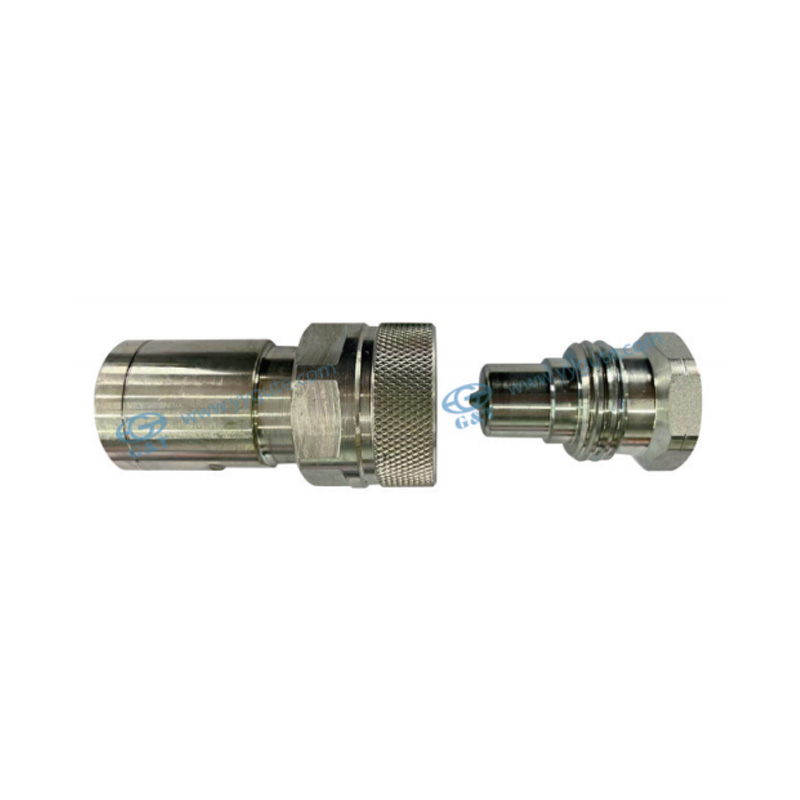Are there any special considerations for selecting Quick Disconnect Couplings for high-pressure applications?
Selecting Quick Disconnect Couplings for high-pressure applications requires careful consideration to ensure safety, efficiency, and durability. Here are some special considerations:
Pressure Rating: The pressure rating of Quick Disconnect Couplings is a fundamental factor to consider when operating in high-pressure environments. It's not merely about selecting a coupling rated for the expected maximum pressure; rather, it involves understanding the dynamic nature of pressure fluctuations within the system. Factors such as pressure spikes, pulsations, and transient pressure events must be carefully evaluated to ensure that the selected couplings can withstand these conditions without compromising integrity or safety. Detailed analysis of pressure data, including peak pressures, mean pressures, and pressure cycling frequencies, is essential for accurately determining the appropriate pressure rating for the couplings. Accounting for factors such as temperature effects on pressure ratings and the potential for pressure containment in case of coupling failure is crucial for comprehensive risk assessment and system design.
Material Compatibility: In high-pressure applications, material selection for Quick Disconnect Couplings becomes even more critical due to the heightened mechanical stresses and environmental conditions. It's not just a matter of selecting materials with high tensile strength; considerations such as corrosion resistance, fatigue resistance, and material ductility under pressure must also be taken into account. Detailed material testing and characterization, including tensile testing, hardness testing, and corrosion resistance testing, can provide valuable insights into material performance under high-pressure conditions. Factors such as material microstructure, grain size, and surface finish can significantly influence the material's ability to withstand pressure-induced deformation or failure. Advanced materials engineering techniques, such as alloying, heat treatment, and surface coatings, may be employed to enhance material properties and optimize performance in high-pressure environments.
Sealing Mechanism: Achieving and maintaining a reliable seal is paramount for preventing leaks and ensuring system integrity in high-pressure applications. While conventional sealing methods such as O-ring seals and metal-to-metal seals are widely used, innovative sealing technologies tailored specifically for high-pressure conditions are continually being developed. These may include advanced elastomeric materials with superior compression set resistance and high-pressure sealing capability, as well as novel sealing geometries and designs optimized for high-pressure sealing performance. Detailed finite element analysis (FEA) and computational fluid dynamics (CFD) simulations can provide valuable insights into seal behavior under varying pressure loads, enabling optimization of seal geometry, material selection, and sealing surface finish for enhanced performance and longevity.
Locking Mechanism: The locking mechanism of Quick Disconnect Couplings plays a crucial role in ensuring connection integrity and preventing accidental disconnection, particularly in high-pressure systems where the consequences of coupling failure can be severe. Traditional locking mechanisms such as ball-locking mechanisms and threaded connections are effective but may pose challenges in terms of ease of use, maintenance, and reliability. Emerging locking technologies, such as magnetic locking systems and self-locking mechanisms, offer innovative solutions to address these challenges while providing enhanced security and ease of operation. Comprehensive testing and validation of locking mechanisms under high-pressure conditions, including endurance testing, vibration testing, and environmental testing, are essential for ensuring reliability and safety in demanding applications.
GT-VVS thread locked type hydraulic quick coupling













Contact Us